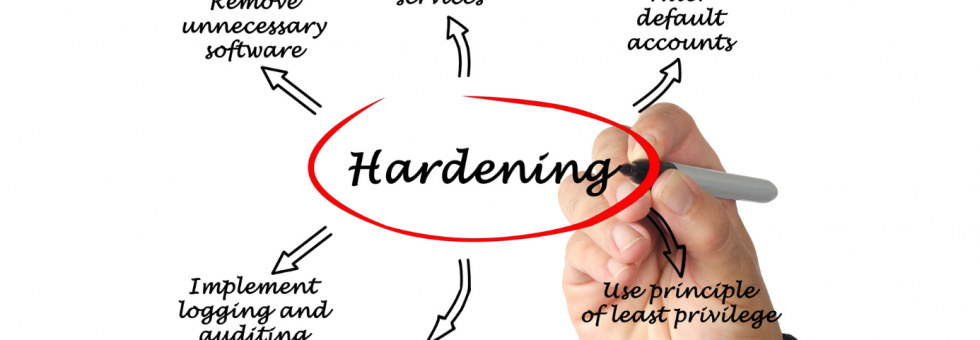Server Hardening
The server hardening process reduces your business’ attack surface and helps you guard against ransomware, malware, and other cyberthreats. You can follow this process to protect all points of entry against cyberattacks, address cybersecurity weaknesses, and optimize your security posture.
What Is Server Hardening?
A server is a computer program or device that supports another program and its end-user (client). It is part of a client/server model in which a server program receives and fulfils requests from client programs.
Servers consist of physical or virtual machines or software. A physical server is used to run software. Comparatively, a virtual server operates like its physical counterpart but does not require any physical components. Meanwhile, a software-based server consists of an operating system and application. Together, these components provide access to hardware and services that the application needs to run.
The National Institute of Standards and Technology (NIST) defines “hardening” as a process used to patch vulnerabilities or turn off non-essential services.
With hardening, your business can eliminate cybercrime attack vectors and unnecessary server processes.
For example, your company can “harden” access to certain system applications, ports, or user accounts. This removes potential vectors a cybercriminal can use to attack your company.
What Is an Attack Surface?
An attack surface refers to any entry points that a cybercriminal can use to infiltrate your company’s servers. It consists of your network interfaces, software, and applications. Your attack surface can grow or shrink, depending on how you manage your systems.
If your company adds systems, it increases its attack surface and gives cybercriminals more potential entry points for attack. Or you can limit the systems you use and minimize your attack surface.
Why Server Hardening Is Important
Hardening your servers allows your company to remove attack vectors. Cybercriminals constantly explore ways to attack servers, and your business must plan accordingly. Failure to do so can result in a server attack and data breach that impact your business, its employees, and its customers.
How Server Hardening Works
Server hardening consists of measures used to protect your business servers’ data, ports, and other components. It also accounts for protection across your firmware, hardware, and software layers.
There are many measures that you can use to harden your servers, including:
- Patching and updating your operating systems regularly.
- Updating third-party software required to run your servers in accordance with industry security standards.
- Requiring users to create and maintain complex passwords that consist of letters, numbers, and special characters and update these passwords frequently.
- Locking an account after a set number of failed login attempts
- Deactivating certain USB ports when a server boots.
- Leveraging multi-factor authentication (MFA)
- Using AES encryption or self-encrypted drives to hide and secure business-critical information.
- Utilizing antivirus and firewall protection and other advanced security solutions
Server Hardening Standards and Guidelines
NIST’s Special Publication 800-123 offers standards and guidelines for hardening servers, such as:
- Create a security plan.
- Patch and update your OS.
- Remove or deactivate unnecessary applications, services, or network protocols.
- Configure OS user authentication.
- Utilize authentication and encryption technologies.
The CIS Benchmarks provide server configuration guidelines that are commonly used by businesses, educational institutions, and government agencies.
Server Hardening Checklist
Here are the factors to consider when you harden your servers:
- User accounts and logins
- Server components and subsystems
- Software and application updates and vulnerabilities
- Server clocks and timestamps
- Networks and firewalls
- Remote access security
- Log management
Server Hardening Process
- Manage Access to Your Servers and Critical Infrastructure: Make sure your servers are in a safe location. Only authorized workers should have access to your servers. Provide these workers with ongoing server hardening training and updates so they can protect your servers 24/7/365. Establish user access controls to limit access to business-critical apps and files. Also, secure routers, switches, and other equipment across your IT infrastructure and restrict physical access to them.
- Set Up a Firewall: Use a firewall to separate your business network from external sources. In addition, create firewall rules and audit them periodically. Your firewall and firewall rules should always ensure your network is protected against malicious applications and unauthorized access.
- Manage Your Configurations: Find out what systems are running on your servers and how they’re being used. Next, set up a system for managing configurations across your IT environment.
- Protect User Accounts: Verify that all server usernames and passwords are private and secure. Require users to establish unique passwords and update them regularly. Utilize MFA to ensure users must complete multiple authentication steps to verify their identities.
- Patch Vulnerabilities: Apply software patches as soon as they become available. Establish a patch management process so you can keep an eye out for patches and update your software frequently.
- Eliminate Unnecessary Software and Applications: Look for software and applications that are no longer in use and remove them. This eliminates attack vectors and reduces your business’ attack surface.
- Make a Backup Plan: Back up your server data to a local server, cloud server, or hybrid system. Establish multiple backup solutions, too. This gives you several options for recovering your server data following a cyberattack or data breach.
- Continuously Monitor Your Servers: Monitor server logins and find out who is accessing your systems, when they are doing so, and other relevant information. Collect and assess server data and insights so you can continuously identify ways to bolster your security posture.
Server Hardening Tips
- Encrypt Your Data: Use encryption technologies across your data. Protect this information using passwords, keys, and certificates.
- Keep Your Software and Apps to a Minimum: Think about whether you need software or applications before you download them. If the answer is yes, download the software or app and keep it up to date.
- Set Up Servers for Different Network Services: Run each network service on its own server. That way, if a server is breached, only one network service is affected.
- Track Your Configurations: Create an inventory for your server configurations. Your inventory should include documentation about each configuration, along with any changes to it. Also, perform configuration testing and track the results of it. Review and update your server configuration inventory regularly as well.
- Conduct Risk Assessments: Establish a risk management plan and conduct testing to understand the current state of your server security. Perform risk assessments to identify security gaps and figure out the best ways to address them. These assessments can be performed by your internal IT security team, or you can partner with a third-party security vendor.
- Enforce Strong Passwords: Make sure your workers follow your company’s password management policy. Do not allow employees to use common password terms that cybercriminals can easily guess. Workers should set up complex passwords and never share them with anyone. They should also avoid keeping passwords on desks or in any public areas.
- Teach Your Workers About Server Hardening: Educate your employees about server hardening, how it works, and why it is important. Regularly review your server hardening training and update it as needed.
- Continue to Look for Ways to Improve: Meet with members of your IT security team, C-suite executives, and other business professionals to discuss cybersecurity. Together, staff across your business can look for ways to protect against all types of cyberattacks and upgrade your security posture.
Implementing the CIS Hardening is a tedious and time-consuming process. Implementing CIS Hardening indeed involves a meticulous and time-intensive process due to its comprehensive nature and attention to detail. Leveraging automation tools like AutomateCIS and strategic planning can alleviate the burden.
AutomateCIS is a robust solution for auditing servers against CIS benchmarks, automating remediation, and providing rollback support. By leveraging automated auditing, intelligent remediation, and rollback capabilities, it empowers organizations to maintain a secure and compliant infrastructure effortlessly. This comprehensive platform not only ensures continuous compliance but also enhances security, operational efficiency, and risk mitigation across diverse server environments.






